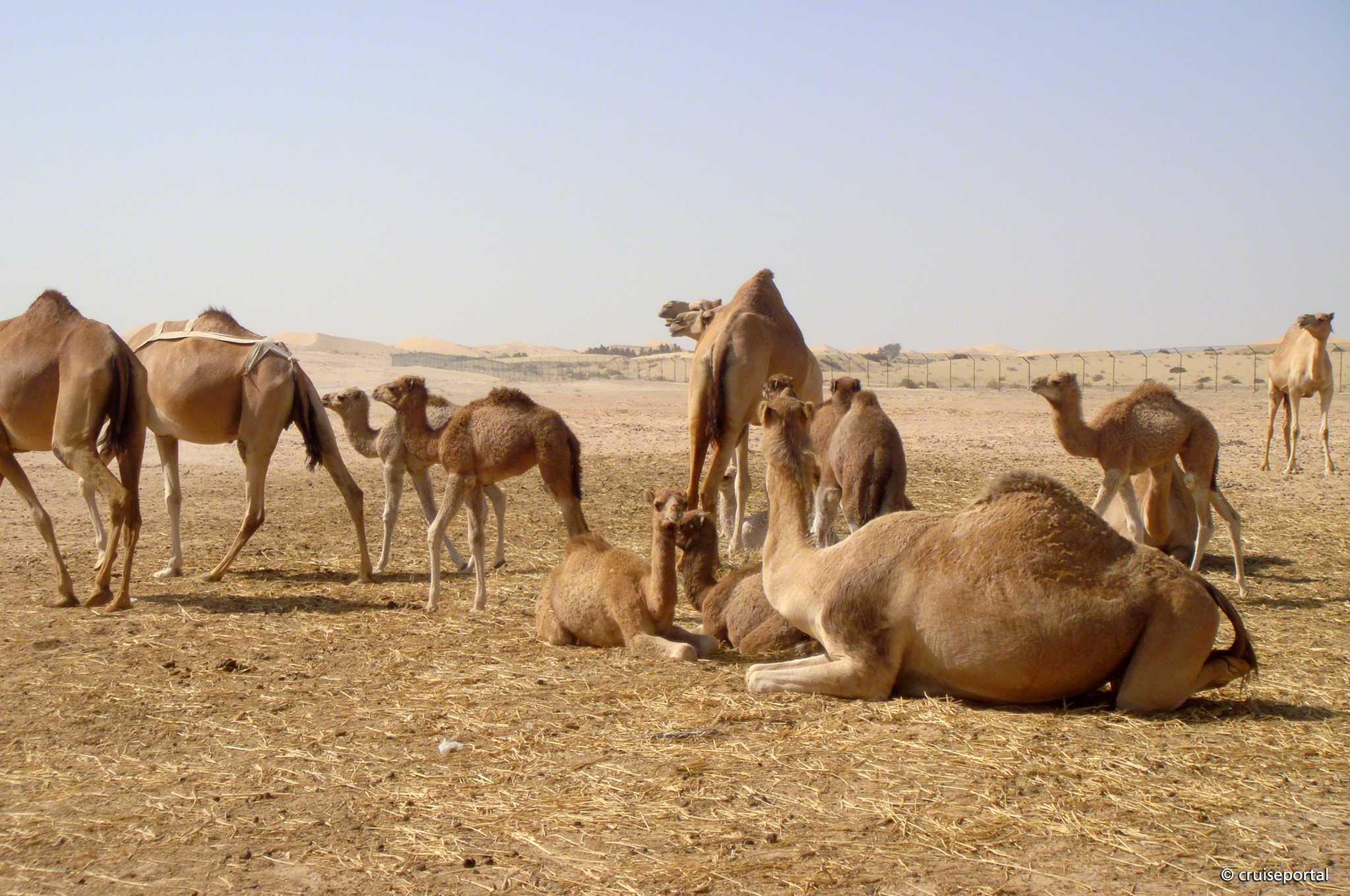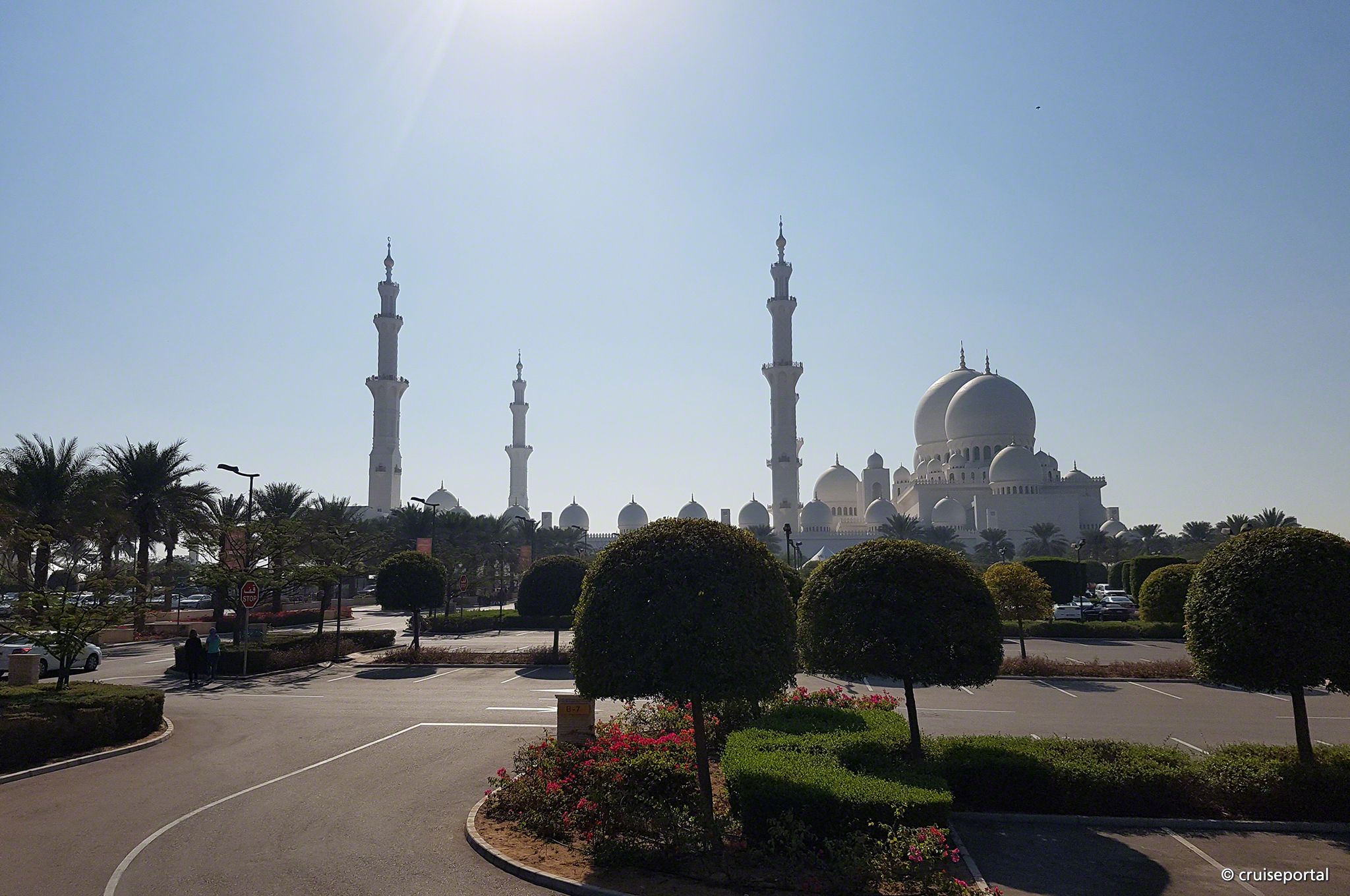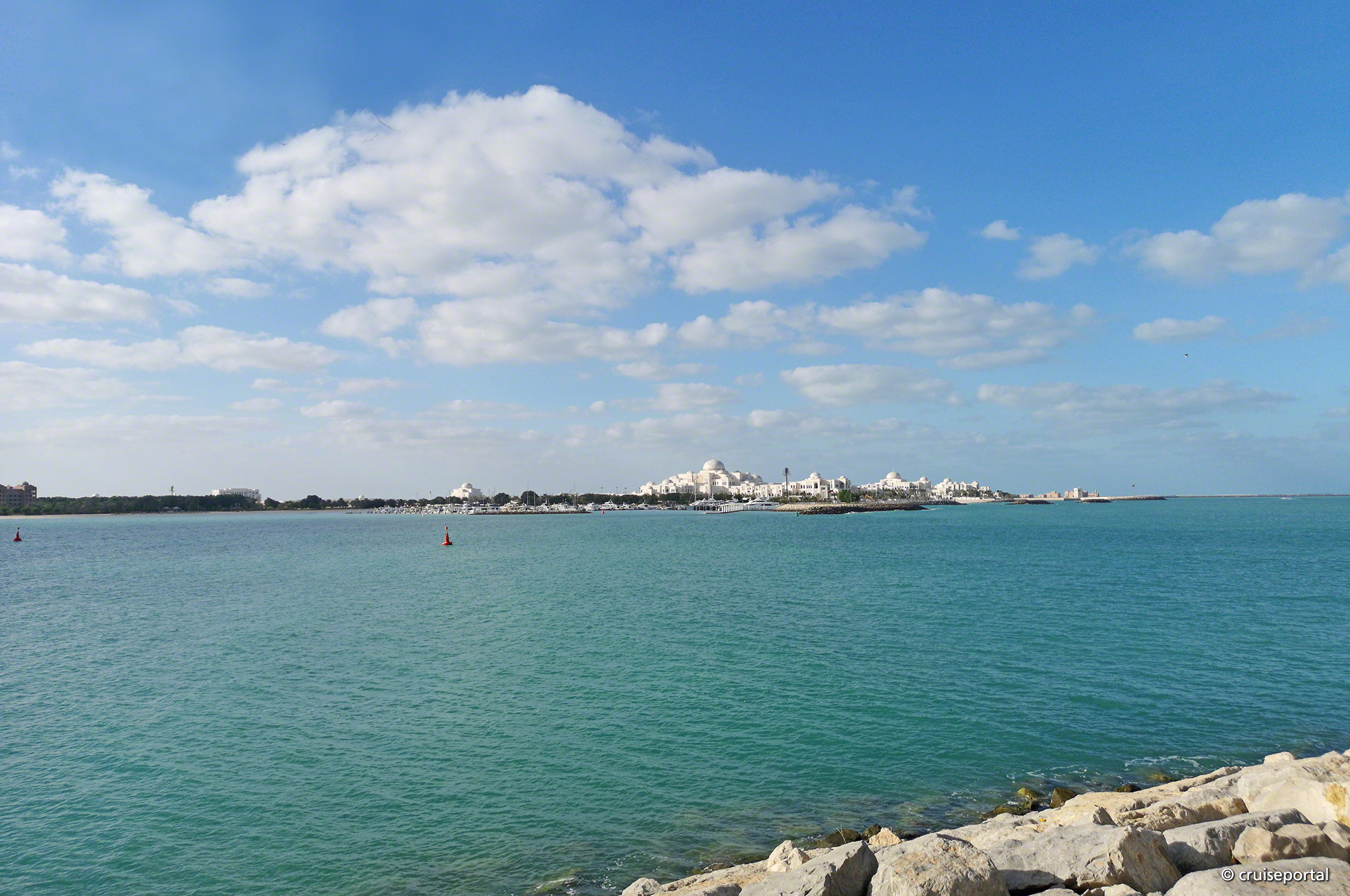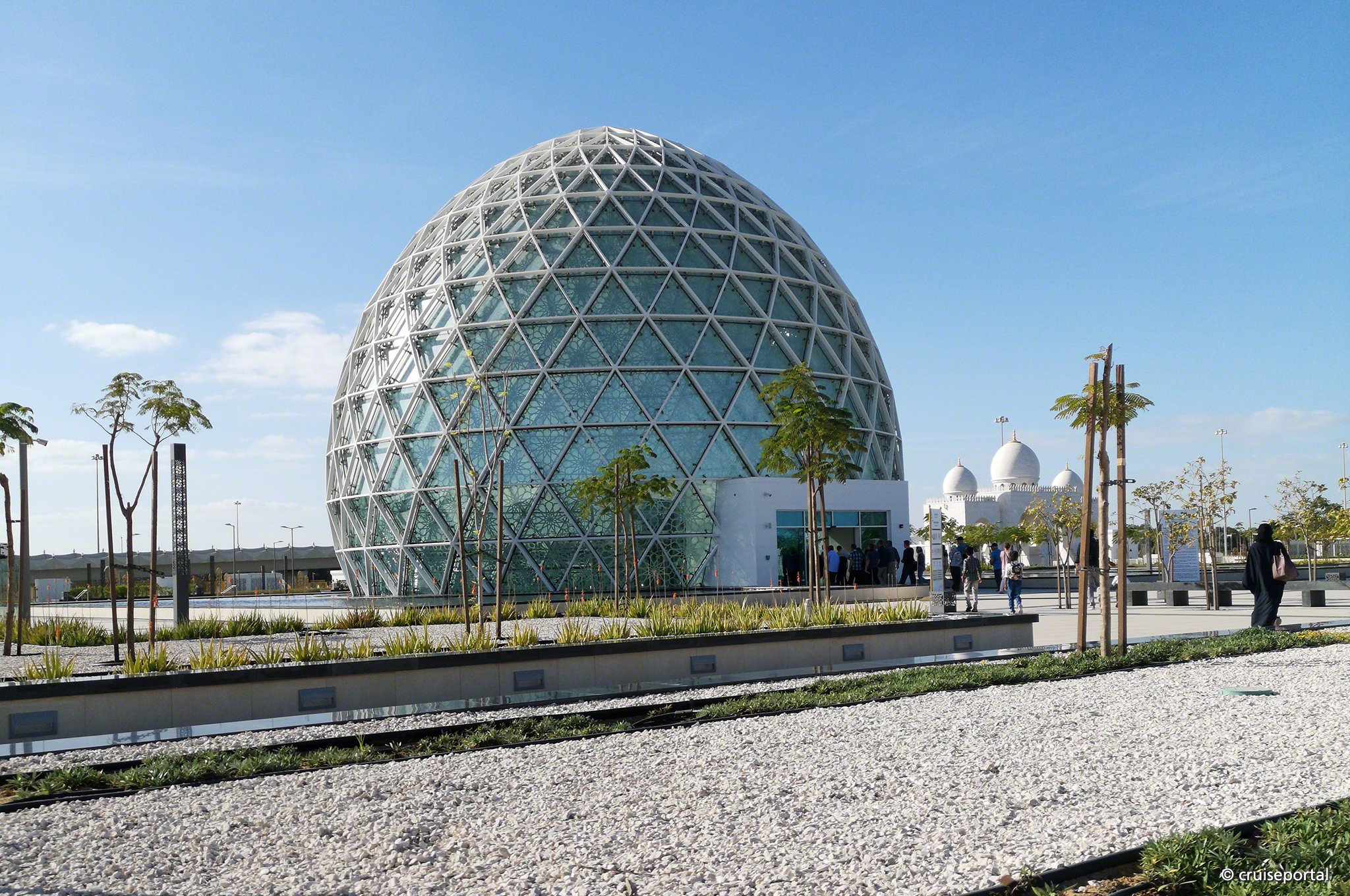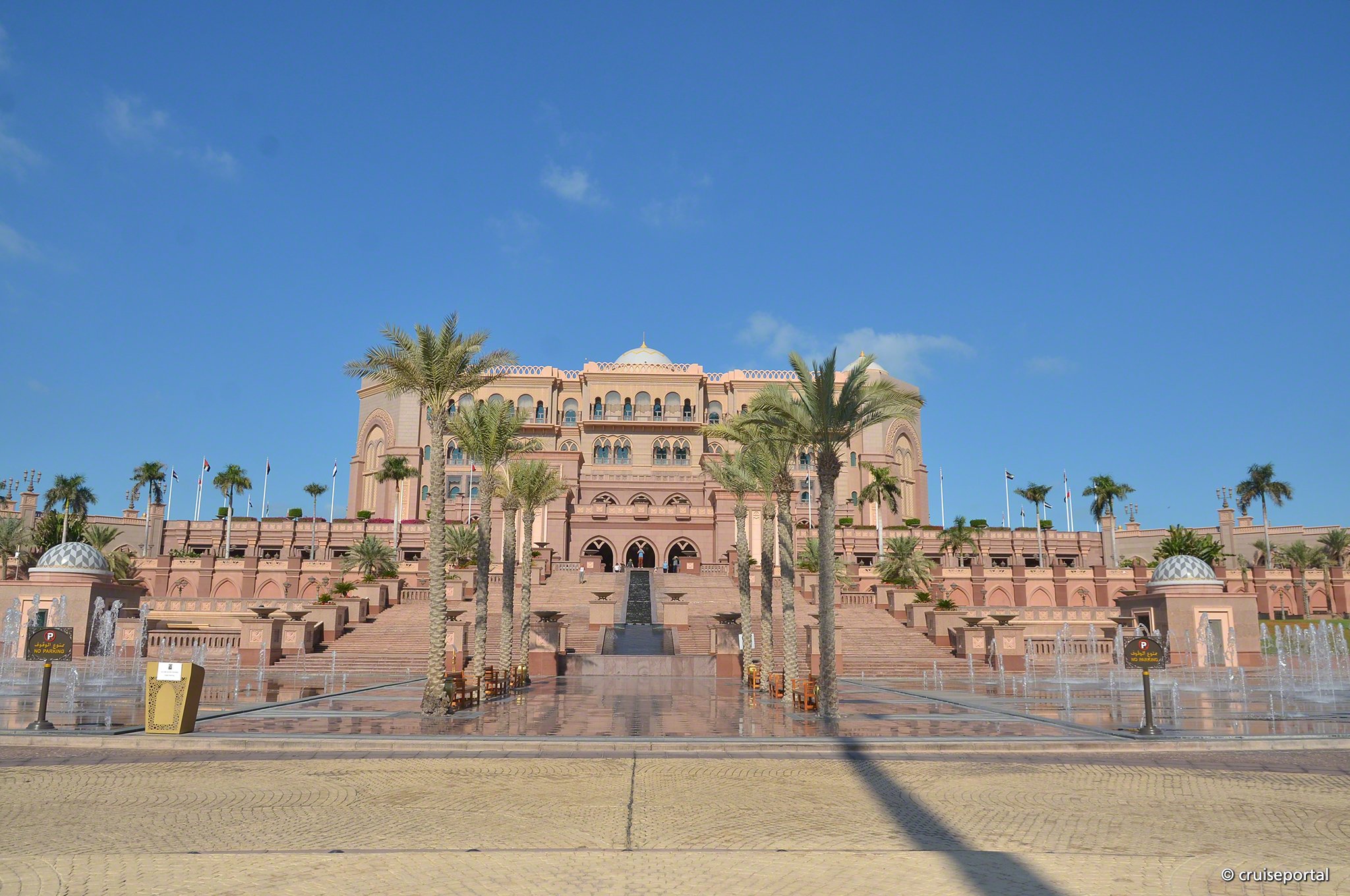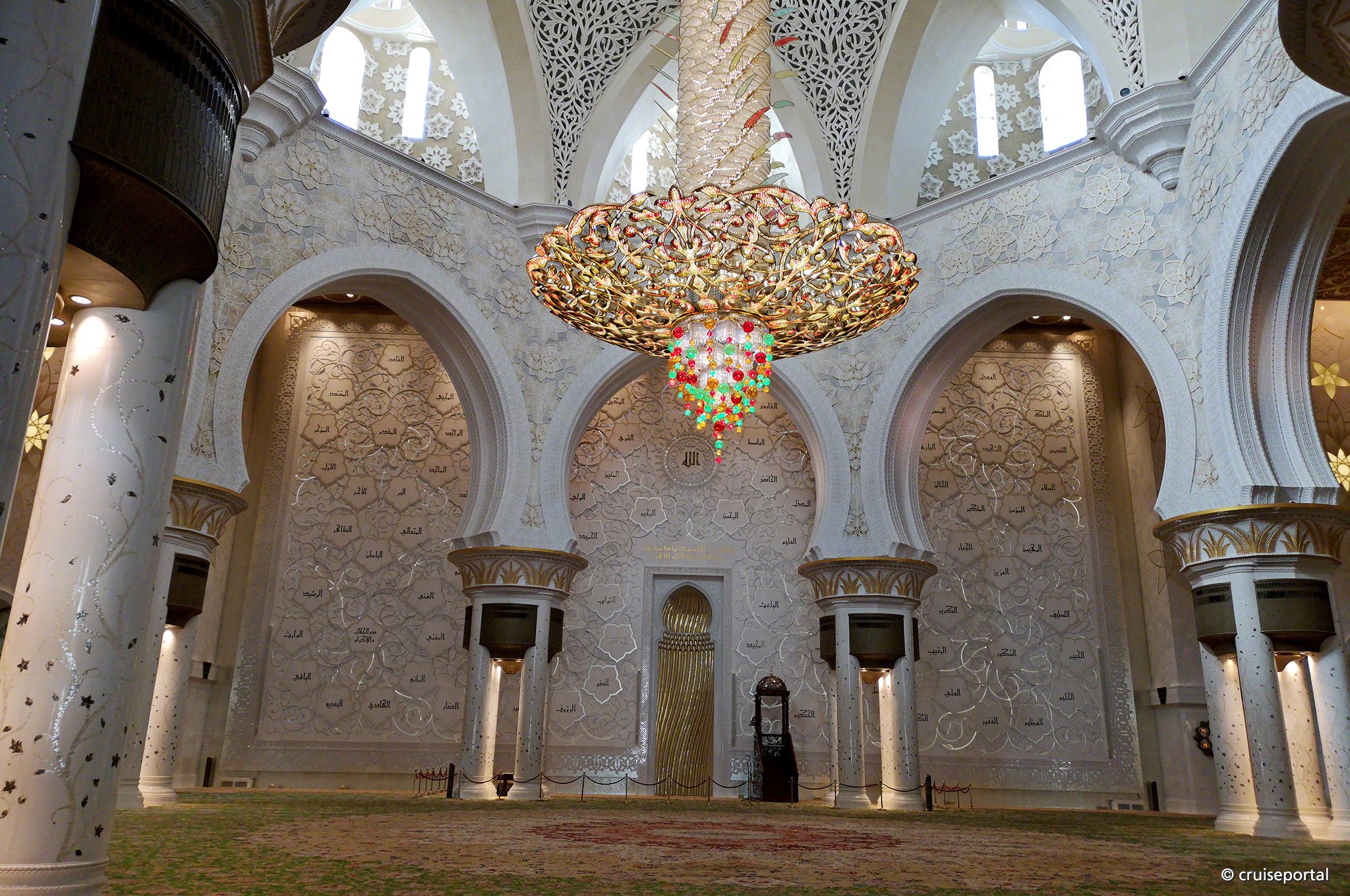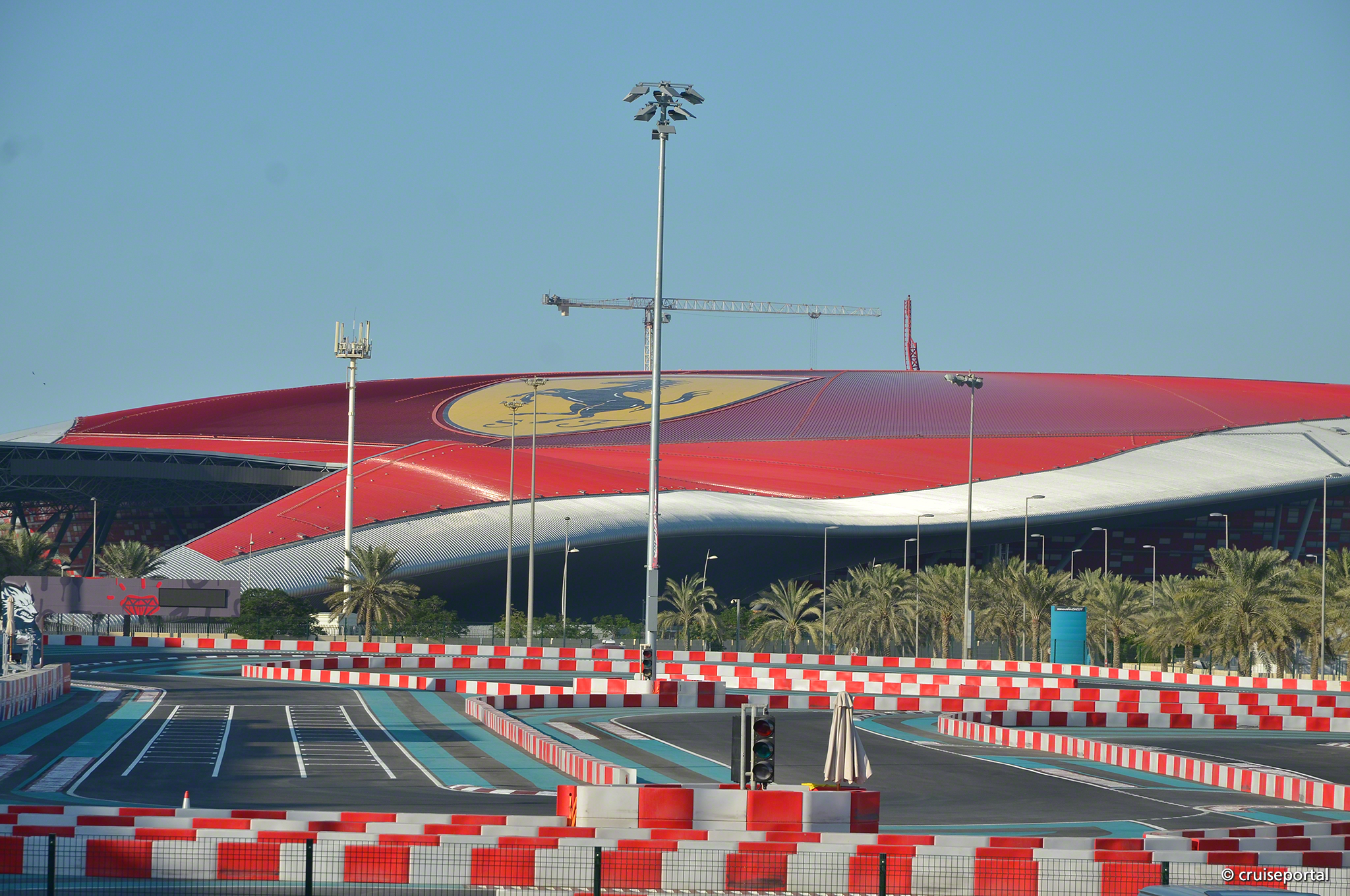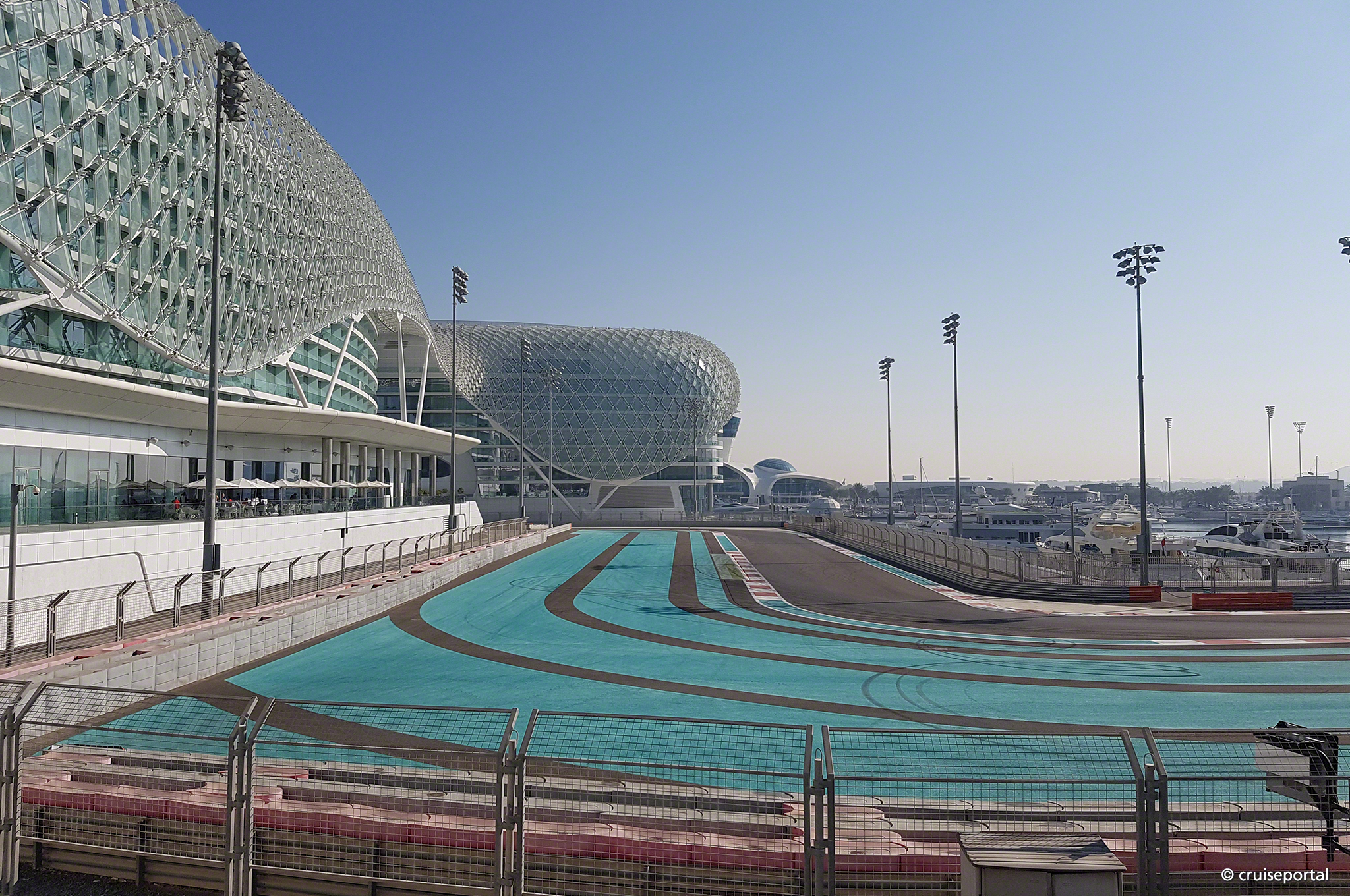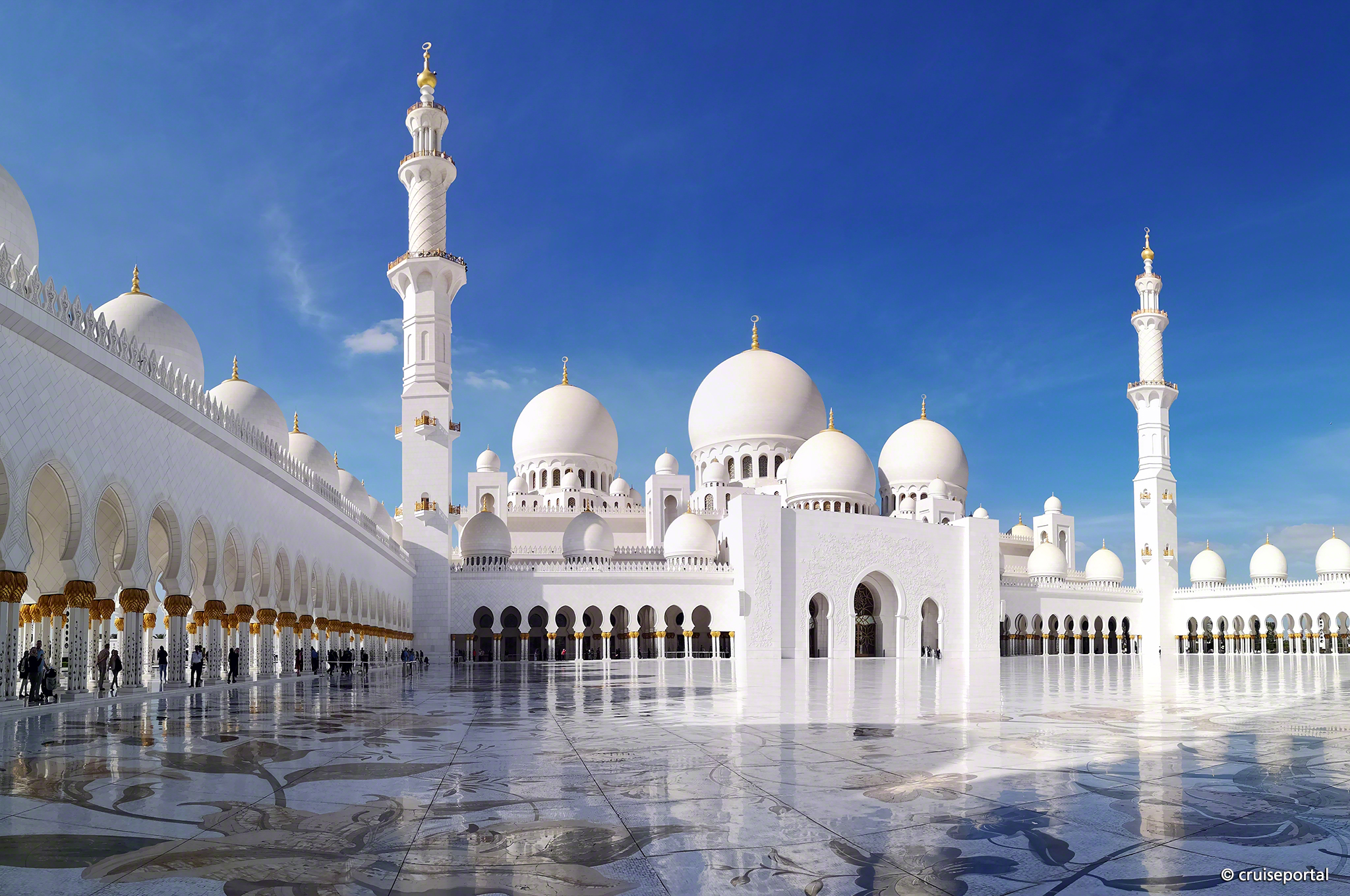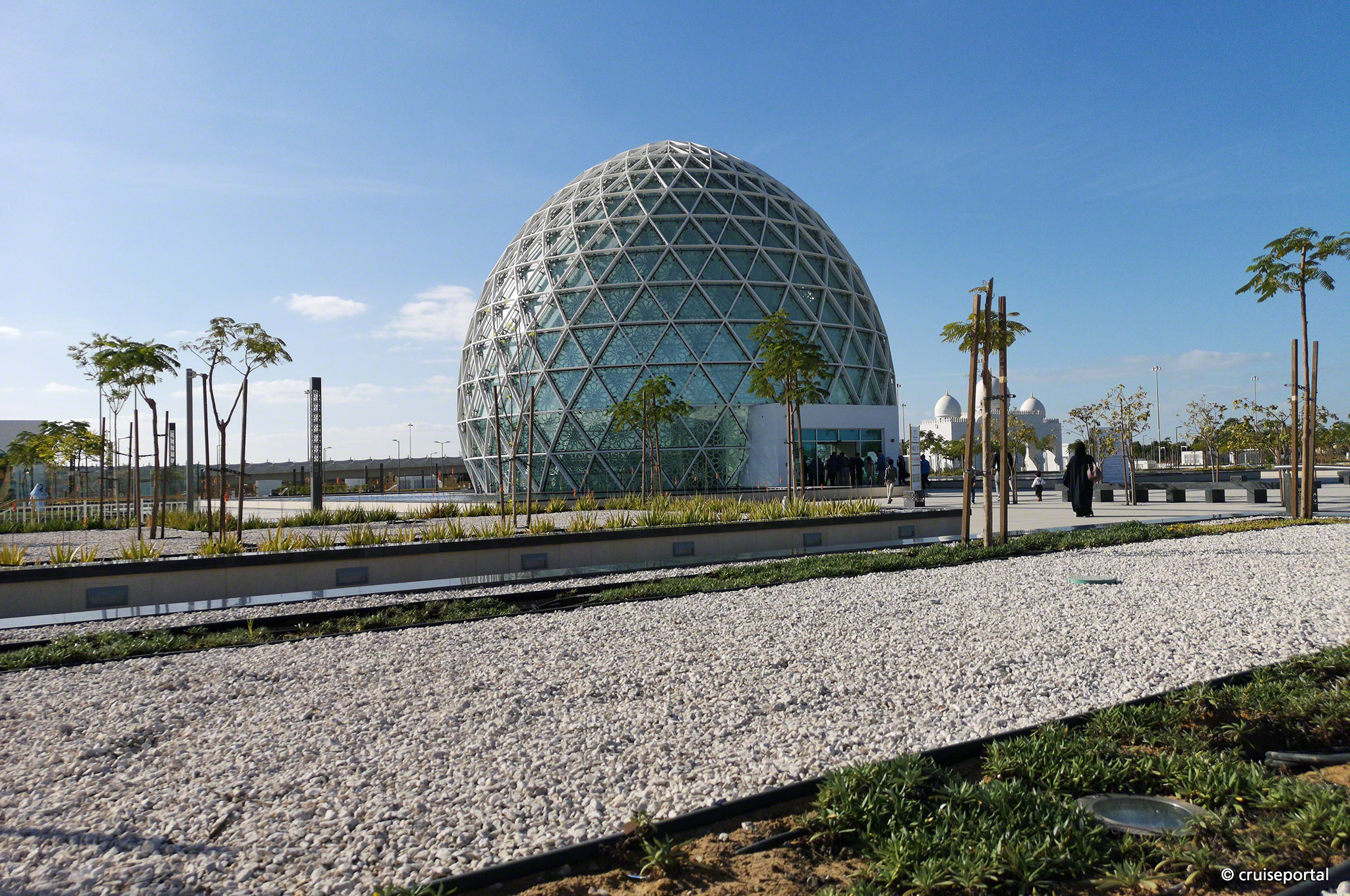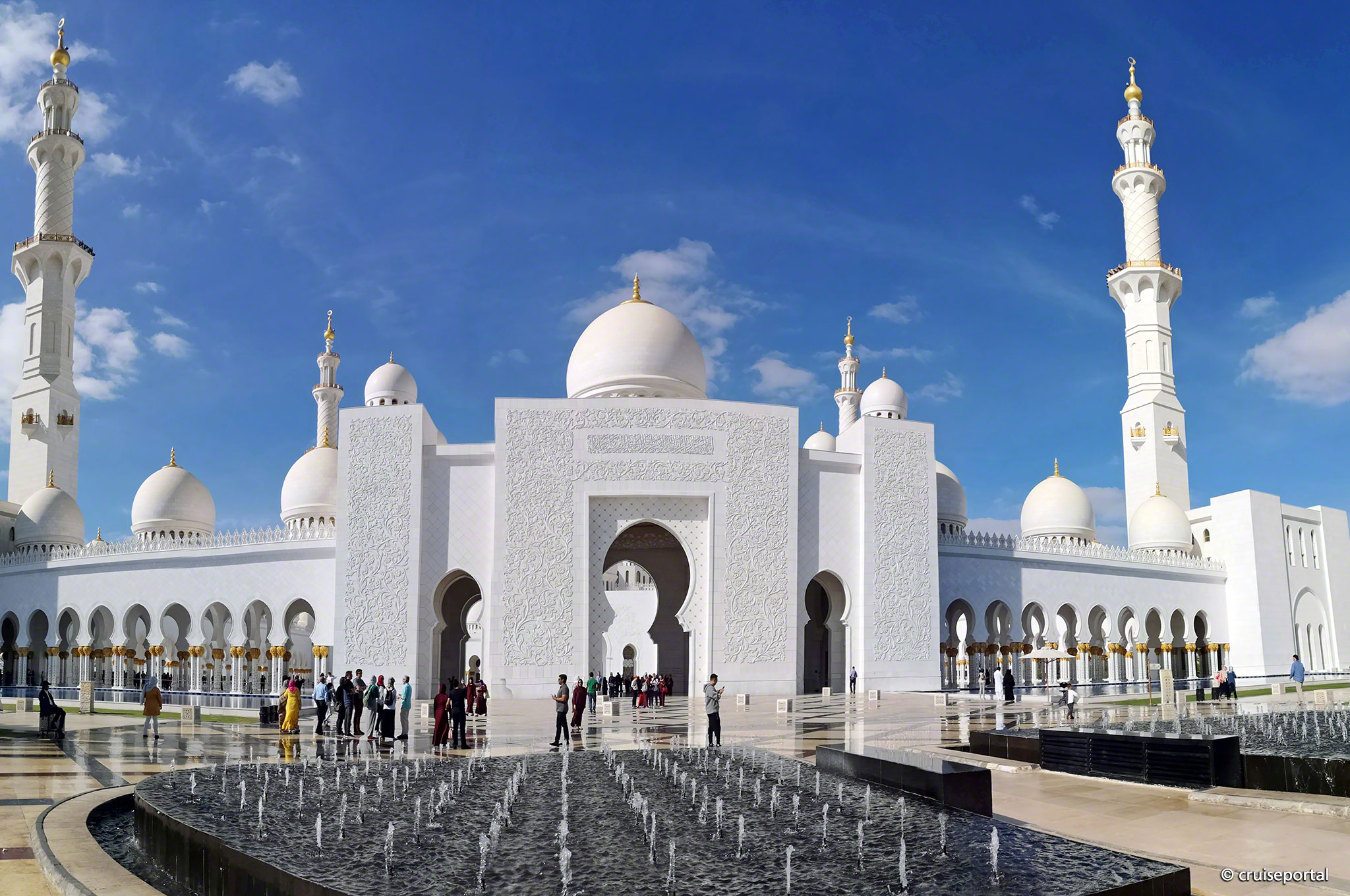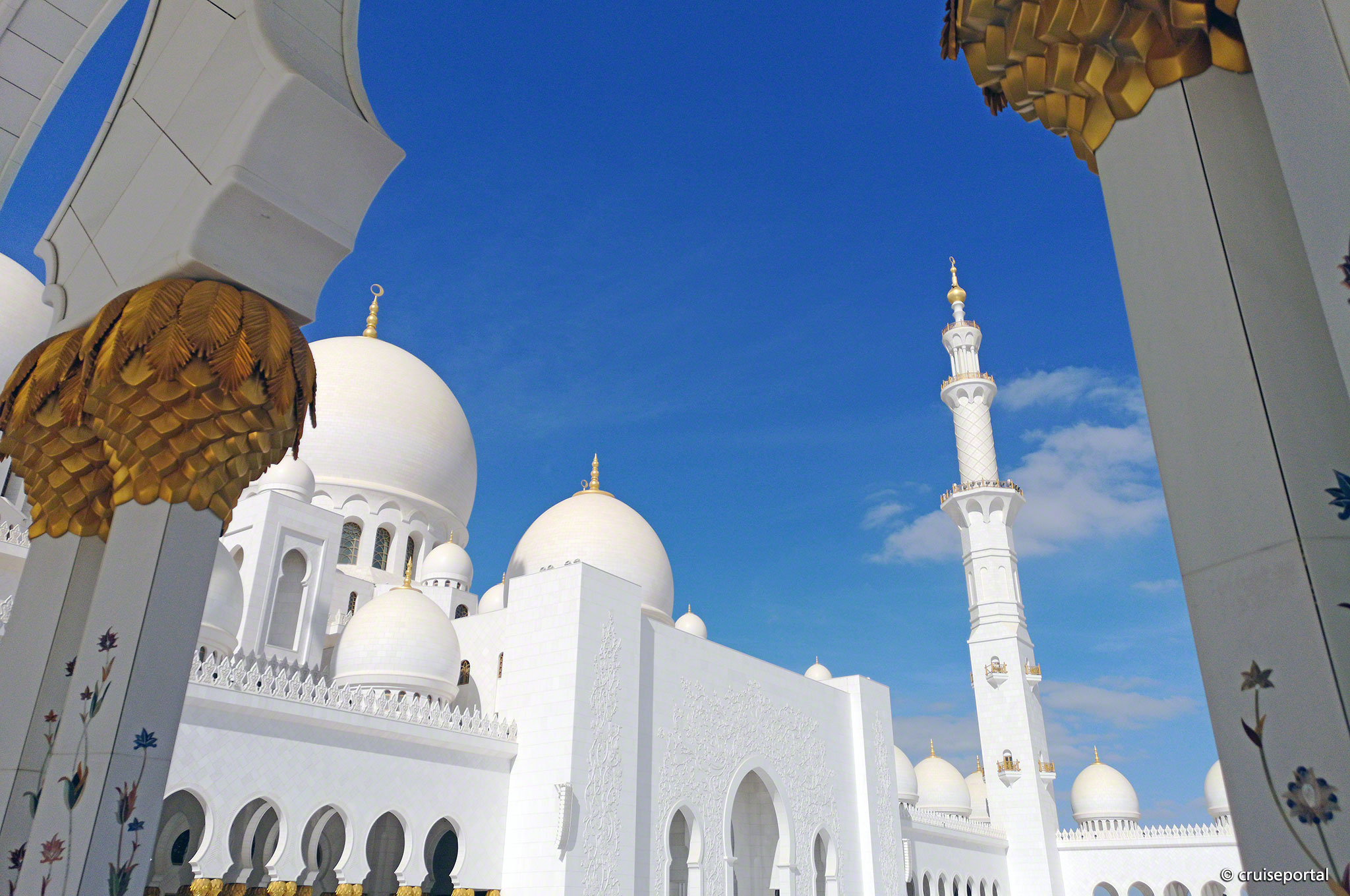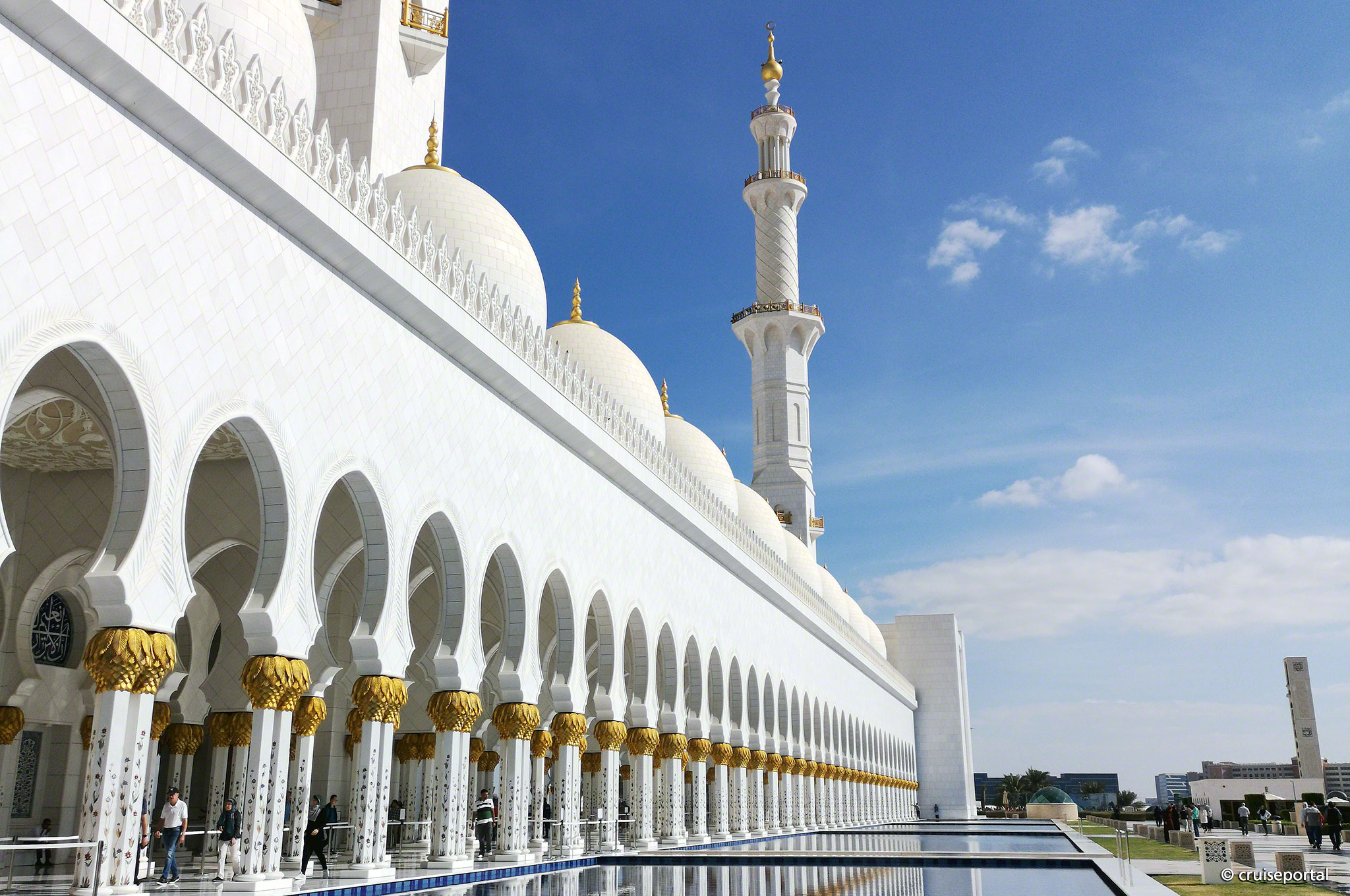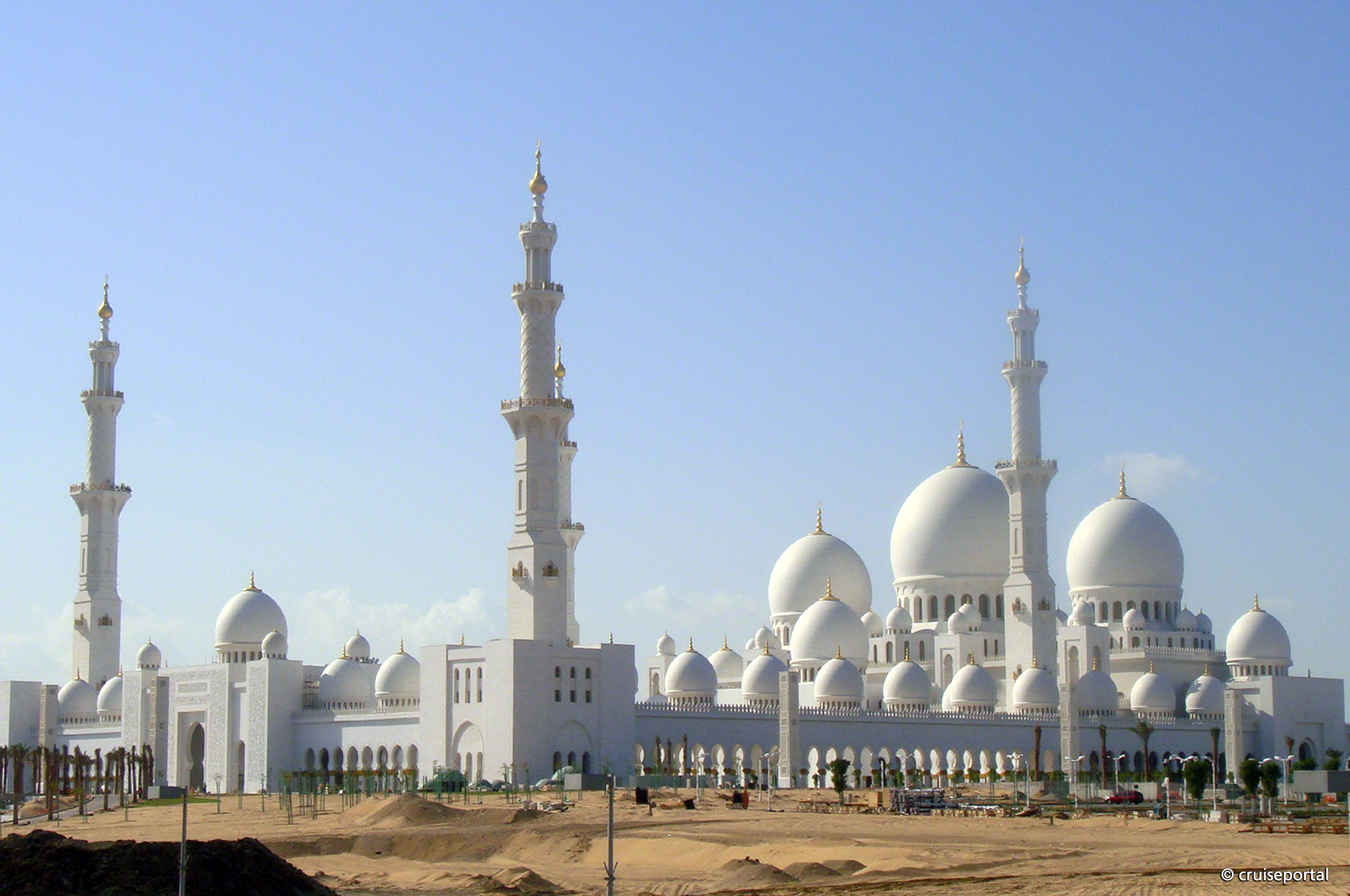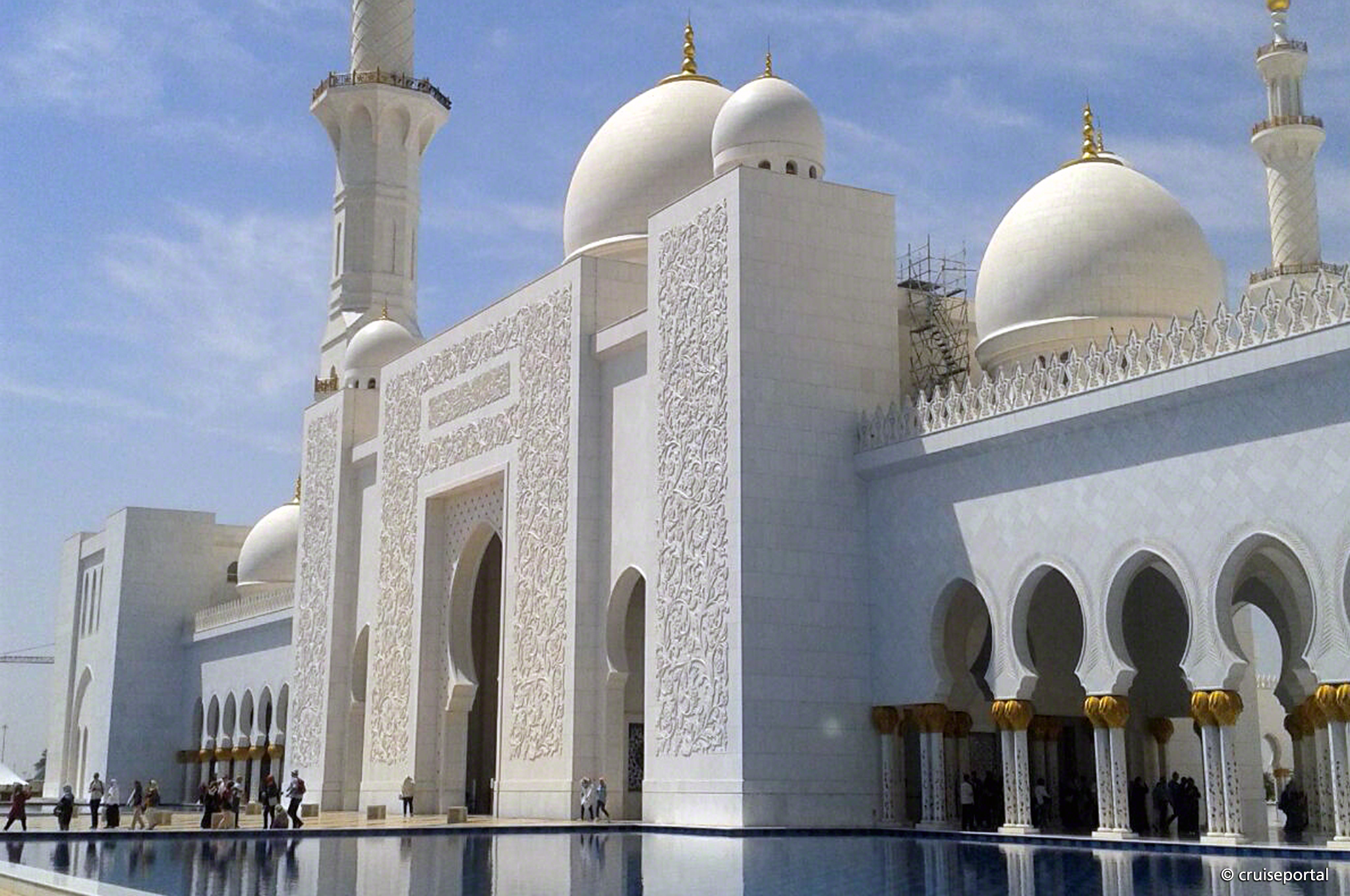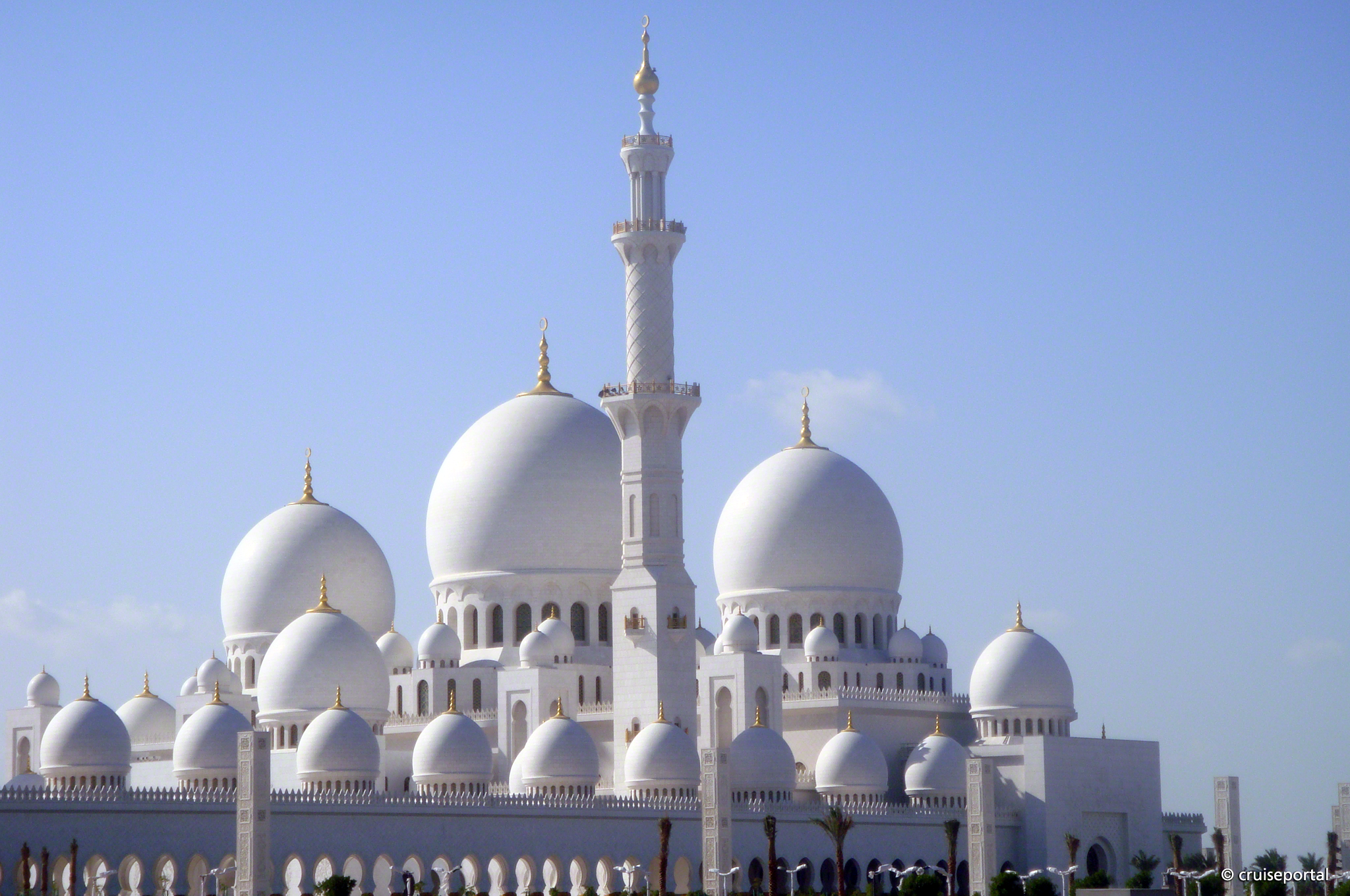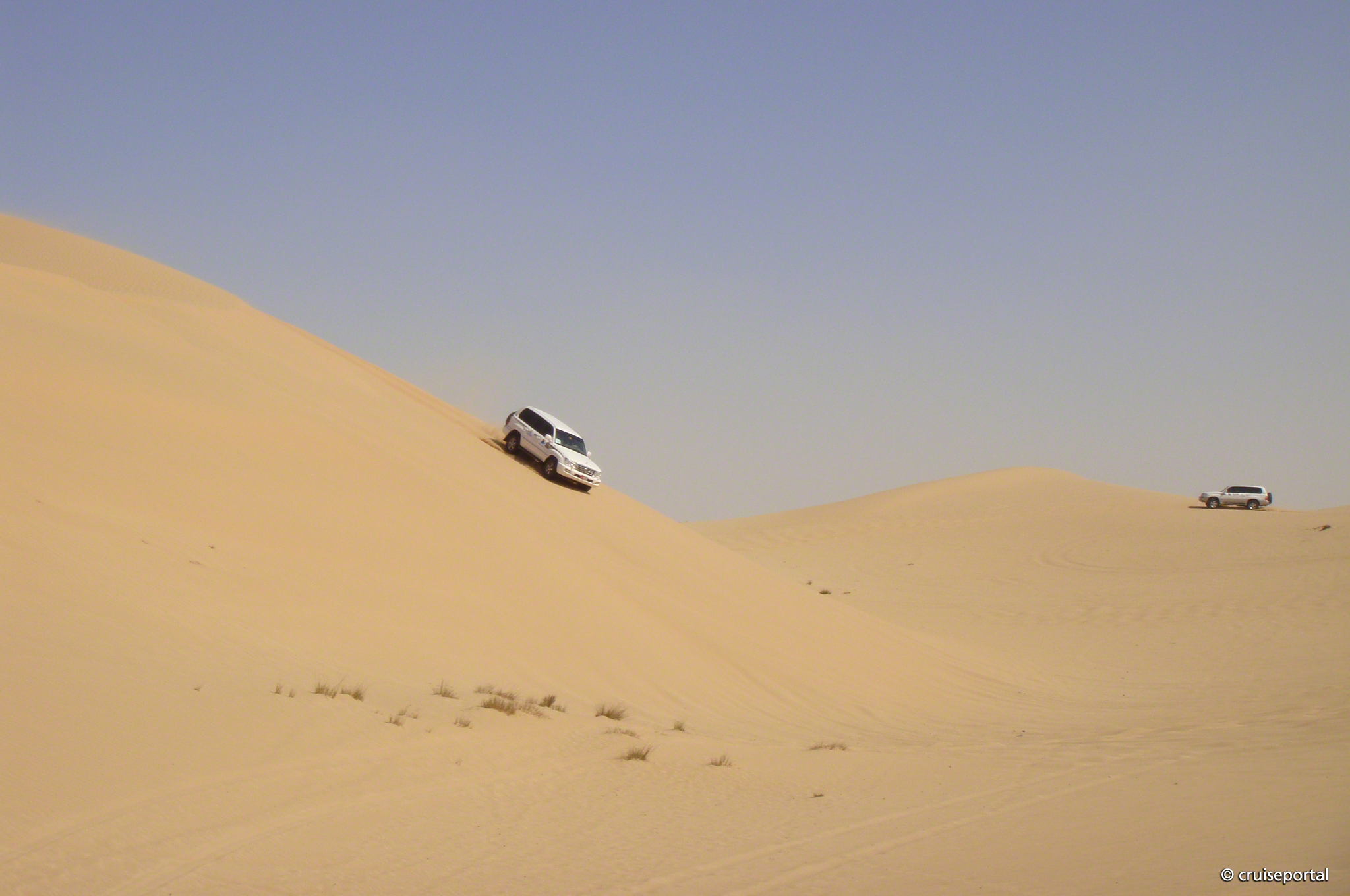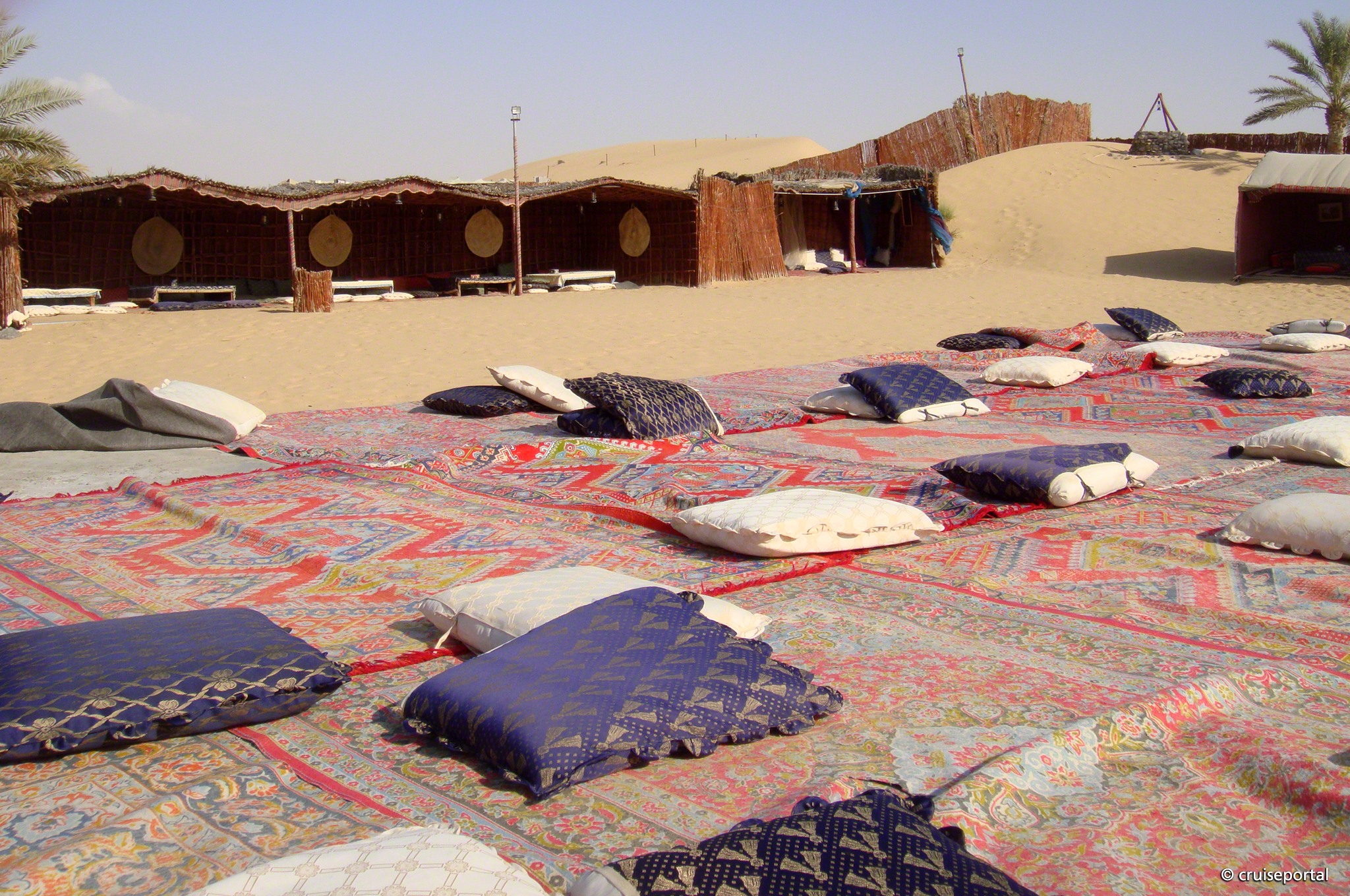Abu Dhabi with its 64,750 kilometres, is the largest sheikhdom of the United Arabian Emirates. It has got around 2 million residents. Behind the flat coast, there is a wide stripe of sandy desert. In the east, the emirate reaches to the Oman mountains, only the coastal part is populated. The first 7-star-hotel has opened its doors here. The capital Abu Dhabi is located on an island of the persian golf, but is connected with the main land and its 605,000 residents through two bridges. Abu Dhabi features one of the largest artificial constructed harbours (Jebel Ali) in the world. Tower high skyscrapers and glimmering glass facades can be seen everywhere, but the spacious, widespread parks and gardens confirm the excellent reputation of Abu Dhabi, to be one of the greenest cities of the region. Abu Dhabi is a picturesque city, beautiful and inviting.
Bilder zum Hafen Abu Dhabi / United Arab Emirates
Cruise offers to the port Abu Dhabi / United Arab Emirates
The city was founded in 1761 and named after a type of gazelle living at that time. In 1795 it became the domicile of the rulers of the emirate. Bedouins, who have founded the colony of Abu Dhabi, lived more unprofitable from fishing and the almost worthless pearl diving. The coast was also called "Pirates coast", the excisting islands, sand bars and coral reefs, which make the passage of these waters difficult even today served as starting point for many pirates. 45 years ago, Abu Dhabi was a small village without electricity, running water or tarmac streets. Within a few years there where a poor fishing village existed which only had bedouin tents, camels and desert, became an ultra-modern city with palaces, luxurious gardens, mosques and a fascinating city promenade because of huge oil resources. A visit to the Heritage Village vividly conveys the lifestyle of the former residents. In the palace-district and the quarter Batina, where the fisherman used to land with their boats and daily catch and where the traditional dhow-dockyard is located, which shows the unchanged making of the typical arabian sailing ships. The huge benefits from oil, allow Abu Dhabi, to accept 50% of all the coasts of various emirates and to lend a huge amount of money to them on a low interest rate. Seawater desalting plants not only stopped the century old shortness of drinking water, but also made the plantation of millions of date palms possbible as well as the creation of vegetable fields and parks. Also, an effort is made for a broad social net (free medical care for all citizens, free education, pension and so on) and a kerosene autonomous economy. A kerosene exhibition informs about everything around the black gold. The city is a financial-, transport-, and communication centre of a rich, oil producing region with an international airport and an artificial deep-water-harbour. Steel pipes and cement are produced here. In Abu Dhabi is the headquarters of a research institute and a large sports centre. Worth seeing in Abu Dhabi is the old palace (white fort), in the city centre near the big mosque. It has been restored and has almost none original components any longer. If you follow the Harbour Road (port road) eastbound, the vegetable market is on your right. Fruit and vegetables from all over the world are sold there.
Which cruise lines and ships sail to Abu Dhabi?
AIDA Cruises, Azamara Cruises, Celestyal Cruises , Costa Cruises, Crystal Cruises, Cunard, Explora Journeys, MSC Cruises, Nicko Cruises, Norwegian Cruise Line, Oceania Cruises, P&O Cruises, Regent Seven Seas Cruises, Royal Caribbean International, Seabourn, Silversea Cruises, TUI Cruises
In which country / island is Abu Dhabi located?
